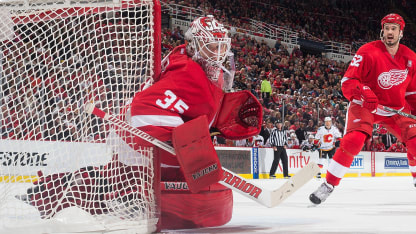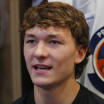Jimmy Howard finished last season as the Detroit Red Wings' backup goaltender after losing the No. 1 job to Petr Mrazek. He realized during the summer that if he didn't consider changes, he might fall further.
When Howard, who not long ago was in the conversation as one of the most aggressive goalies in the NHL, took a step back and examined his game, he decided to also take a step (or two) back into his crease. Three months after buying into those changes and six weeks into the season, Howard is reaping the benefits, including a 1.76 goals-against average, sixth best in the League, and a .943 save percentage, which is fifth in the League. .
Step back helps Jimmy Howard go forward
Staying in crease, being less aggressive has helped Red Wings goaltender raise save percentage

© Dave Reginek/Getty Images

















